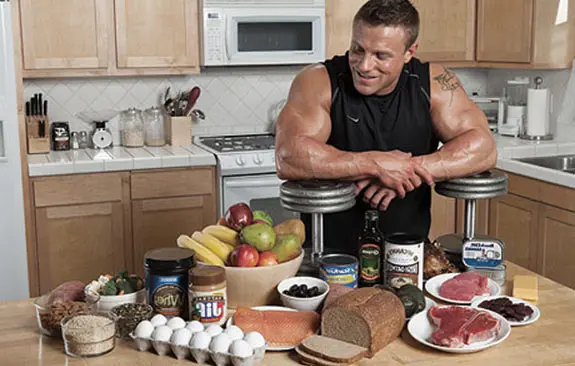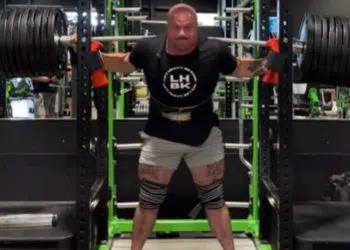Decades of common knowledge have dictated that the best way to eat is to eat about six small meals spaced several hours apart. However, recent research has suggested that intermittent fasting can improve your overall health and make you less vulnerable to chronic illnesses.
Intermittent fasting is a nutrition plan that can actually fit in to your life and that doesn’t make every single meal an exercise in juggling your schedule. While it isn’t for everyone, people who are dissatisfied with their current eating habits may be interested in the health benefits of eating less frequent meals and in a potential increase in your body’s ability to process the nutrients you consume.
When fitness enthusiasts and athletes talk about intermittent fasting, they are usually talking about an eating program that is different from the intermittent fasting described in scientific literature. Under laboratory conditions, test subjects consumed no calories during the fasting period. However, in the real world, this can cause problems, since we have to function at work and at home. People who eat on an intermittent fasting schedule usually abstain from eating during the fasting period but get some calories in the form of low-calorie beverages such as coffee or tea.
This is not the only way that the real-world version of intermittent fasting deviates from the laboratory version.
Do a quick Internet search for intermittent fasting schedule and you’ll see about as many variations as there are people who stick to an intermittent fasting schedule. Many of these people have great success stories, which illustrates how useful this kind of schedule can be. Intermittent fasting is easily adapted to fit your needs.
It might sound a little extreme to suggest fasting for sixteen hours each day and eating for only eight hours, but in reality you are already fasting for six to eight hours every day if you are getting the recommended amount of sleep. That is up to half of your fasting time if you use a 16/8 schedule, which probably makes the prospect of facing a sixteen-hour fast much less daunting.
Level Up Your Fitness: Join our 💪 strong community in Fitness Volt Newsletter. Get daily inspiration, expert-backed workouts, nutrition tips, the latest in strength sports, and the support you need to reach your goals. Subscribe for free!
Eating on an intermittent fasting schedule does not mean that you are cutting calories or nutrients, but rather that you get all of your nutrients during your eating period. Being in a fasting state will neither cause you to lose muscle mass, nor will it impair your ability to build new muscle. You can even train in a fasting state.
Rethinking Common Sense
Intermittent fasting is based on the idea that the total amount of nutrients that you consume is more important than ensuring they are delivered at the right times.
We are told over and over that making sure your body has a constant supply of protein and amino acids is the best way to ensure that it can build muscles most efficiently. However, there is evidence that this can actually keep your body from building muscle as efficiently as it can.
The idea that a constant source of protein is needed to keep your body in an anabolic state is faulty. Eating high-protein meals two to three hours apart is unlikely to stimulate additional muscle growth because the amino acid levels in your body do not deplete as fast as your protein levels do. Basically, your body becomes desensitized to high levels of protein as time passes. Meals spaced further apart can recondition your body’s sensitivity to protein and amino acids.
The decrease in muscle protein synthesis is just one way in which the six meals per day program is faulty. Another flaw is the effect that frequent meals have on your body’s ability to burn fat, which is a crucial process for people whose goal is to become lean and for bodybuilders. Providing your body with a constant supply of energy means that it won’t need to burn fat, which it only does when it has depleted all of your other sources of energy.
The six meals per day program is based in part on the idea that you will feel less hungry between meals, making you less likely to binge each time you do eat and less likely to snack on unhealthy foods between meals. However, this can also be faulty in many cases.
In one study, people who got one high-protein meal as opposed to five smaller meals felt less hunger later on and ate less at their next meal. This suggests that frequent meals may make you more likely to eat extra calories, which is the opposite of the intended effect of decreasing your hunger.
In addition to potentially having a negative effect on your body and the results you get from working out, eating six meals a day can become tedious. Having to stop what you are doing every two to three hours to prepare a meal does not usually fit in to most people’s schedules. Many people on a training diet devote one entire day each week – usually on the weekend – to preparing all of their meals for the upcoming week. Not only can this take up an entire Sunday, the cost of buying and replacing plastic containers to carry your meals in can be prohibitive for this kind of meal preparation.
Level Up Your Fitness: Join our 💪 strong community in Fitness Volt Newsletter. Get daily inspiration, expert-backed workouts, nutrition tips, the latest in strength sports, and the support you need to reach your goals. Subscribe for free!
How to Schedule Your Fasts
There are no hard rules regarding how you schedule your fasting periods and feeding periods. There are common guidelines that people generally follow when starting an intermittent fasting program, but one of the greatest advantages of this kind of program is that it is customizable. You can change your eating schedule to fit your lifestyle instead of structuring your entire day around your meals. This means that if one fasting/feeding schedule does not fit your routine, do a little research for suggestions on what changes you can make.
Most people on an intermittent fasting schedule use a 16/8 schedule, meaning sixteen hours fasting and eight hours feeding. This is generally the easiest schedule to start with, since around half of your fasting time is during sleep, which is when you would be fasting anyway. The feeding period tends to be between noon and 8 P.M.
You will need to choose whether you would prefer to work out while fasting or after having eaten. If you adhere to the noon to 8 P.M. eating schedule, this basically comes down to whether you work out in the morning or afternoon. Remember that you can change your schedule to accommodate your needs. If you prefer to work out in the morning after eating, you can alter your fasting and feeding periods to allow you to do this.
Training During Fasting
Fasted training requires some supplements to keep your body in an anabolic state. The body uses amino acids for energy if you are training without a pre-workout meal. Your supplements for fasted training should include glutamine and a branched-chain amino acid supplement.
Working on the noon to 8 P.M. feeding schedule, you fast from 8 P.M. until 10 or 11 A.M. At this point, take your glutamine and BCAA supplements, and then do your workout. Depending on how long your workout lasts, this will put your post-workout meal at around noon or 1 P.M. How many meals you choose to eat during your feeding period is up to you, but remember that eating less frequently can keep your hunger in check and can boost your body’s ability to synthesize muscle.
Training During Feeding
If you prefer to work out after eating, you can schedule your workout to fall in the early afternoon (noon to 1 P.M.) or in the middle of the afternoon (around 4 P.M.) If your workout is usually in the early afternoon, eat your pre-workout meal at noon, do your workout, and then eat your other meals.
For a mid-afternoon workout, eat your first meal at noon and your pre-workout meal at 3 P.M. If you prefer to eat a post-workout meal within an hour of working out, you can do so.
Fine-Tuning Your Calorie Intake
The only real rules about intermittent fasting involve some aspects of when and how you get your calories and macronutrients.
If you train while fasting, the calorie count of your BCAA supplement should be counted toward your total calorie count for the day, although it does not end your fasting period. People on intermittent fasting schedules typically allot fifty calories for their fasting period to allow for things like supplements or beverages. This means that you can still take cream and sugar in your coffee or tea, even if it is during your fasting period.
If you eat a pre-workout meal, it is best to keep it light. Your meal should include a protein source like poultry or fish, some fruit and vegetables, all adding up to 400-500 calories. This will give you the protein and complex carbohydrates that are frequently recommended for pre-workout meals. If you do eat a pre-workout meal, the BCAA supplements recommended for fasting workouts are probably not necessary. You may want to take them anyway, since having a surplus of BCAAs may still be useful.
Your post-workout meal is the best time to consume most of your carbohydrates and calories. About half of your total calories for the day should be eaten during your post-workout meal.
Adjusting to Intermittent Fasting
One of the most difficult obstacles to overcome when you first begin intermittent fasting is the way you have conditioned your body to expect frequent meals. Your body’s production of ghrelin, the hormone that causes you to feel hunger, adapts to your general feeding schedule. This means that you have to allow it to adjust to fewer meals, which can take some time.
Tracking your calorie and macro nutrient intake can help ease the transition from your six meal schedule to an intermittent fasting schedule. If you have been on a training diet for any length of time, you are probably no stranger to writing down what you eat, or even keeping track of it with a computer program or smartphone application. This will help you convert your six small meals into a few larger ones to fit your intermittent fasting lifestyle.
Conclusion
Intermittent fasting is well-adapted to any schedule, which is probably why it has such wide appeal. Many of the people who switch to an intermittent fasting schedule are quick to talk about what a relief it is not to have to spend so much time preparing and eating food. Since you no longer have to stress about food, remember to be flexible on occasion. You might have a family event that involves eating at some point during your fasting period. Part of the appeal of intermittent fasting is that you no longer have to structure your life to accommodate your eating habits, so don’t stress about eating when you should be fasting on these occasions.













